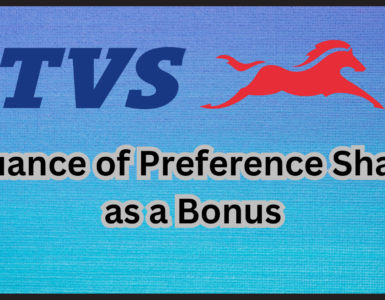Antitrust laws play an important role in ensuring that corporate transactions such as Mergers & Acquisitions have the benefit of competitive prices and quality of goods and services. The antitrust laws accomplish these goals by promoting and fostering competition in the marketplace and preventing anticompetitive mergers and business practices. In the last 20 years, virtually every developed nation in the West has created a sophisticated legal system to deal with restrictive agreements, abuse of market power and notification and regulation of mergers and acquisitions that pose a threat to competition.
Overview of US and EU laws:
The antitrust laws of the US and the EU address almost identical sets of anti-competitive practices and combinations, but they slightly differ with criteria of assessment and means of enforcement. While the US antitrust law aims for maximum diffusion of competition, the EU law aims at the diffusion of competitive power tempered by cooperation. The two laws offer different sets of remedies.
[rml_read_more]
US antitrust regulations mainly gather force from two US Acts namely, the Clayton Act & the Sherman Act. The Hart–Scott–Rodino Antitrust Improvements Act of 1976 (HSR Act) is a set of amendments to the antitrust laws of the United States, principally the Clayton Antitrust Act. The US law is essentially `structural’ in that it contemplates remedies such as dismemberment of monopolies, and an imposition of damages in private suits; the EU antitrust law sees regulation of obnoxious behaviour, rather than dismemberment of offenders, as the appropriate remedy.
With the world economy becoming increasingly integrated, in the last decade countries as diverse as Canada-Brazil, Italy, South Africa, Korea, and Russia have enacted antitrust laws and created agencies to enforce them. This increased emphasis on national competition legislation has prompted some concern that, in a world where international business transactions are commonplace, simultaneously applying different national laws to the same transactions may create inconsistent procedural and substantive antitrust rules that could, over time, threaten efficient international economic integration.
Over the last ten years, the competition laws and policies of many countries have converged in a significant manner. The best evidence of this development is, of course, the clear consensus that free market economies are the best vehicles to prosperity and that competition law have an important role to play in safeguarding the efficient operation of such markets.
What Actually Is Prohibited By Antitrust Laws?
Antitrust Laws are not at all explicit about what conduct is prohibited. The Clayton Act is a little more specific about conduct that may be illegal, but only when such conduct substantially lessens competition or tends to create a monopoly in any line of commerce, neither of which is defined in the statute. Because state antitrust law substantially tracks the federal antitrust laws, the same interpretive issues arise under those statutes as well.
Per Se Offenses:
Certain forms of agreement among competitors are so harmful to competition and consumers that such conduct should be prohibited outright. The antitrust laws deem these types of offenses as per se illegal because they will always or almost always result in consumer harm. Examples of per se offenses include price fixing, bid rigging, market and/or customer allocations and group boycotts.
Per se offenses, require an agreement to be illegal under antitrust laws. An agreement, by definition, requires more than one person acting together; unilateral, independent business decisions will not meet the agreement requirement. An agreement does not have to be in a particular form; it can be proven by a written document, verbal exchanges, or even inferred from conduct (e.g., regular meetings between competitors followed by joint conduct immediately afterward).
- Price fixing:
Price fixing is an agreement among competitors to raise, lower, or otherwise stabilize the price range, or any other competitive term that will be offered for their products or services. Competitive terms that competitors may not agree to include anything from financing terms and warranties to discounts and shipping fees. What matters is whether there is an agreement, the effect of which is to directly or indirectly affect prices. Price fixing has long been recognized as per se illegal under the Sherman Act.
Example:
Firm A competes with Firm B. For the past several weeks, they have been engaged in a price war, with each firm attempting to undercut the other’s prices. Upset with the current market prices, Firm A’s CEO calls Firm B’s CEO and tells him that the low prices are endangering his business and that he can no longer cover his costs at the current price level. To save his company from going under, he offers not to undercut Firm B’s prices anymore if Firm B can agree to the same. Firm B’s CEO accepts and the price war ends. A’s and B’s agreement not to undercut the other’s prices constitutes a price-fixing agreement under the Sherman Act. Because price fixing is per se illegal, it does not matter that Firm A made the agreement to save his company from going out of business; it is still illegal under the Sherman Act. It would also be illegal if non-CEO employees reached the same agreement.
- Bid Rigging:
Bid rigging refers to coordinated conduct among competing bidders that undermines the bidding process. One common form of bid rigging is an agreement among bidders as to who will win the bid.
Example:
For the past several years, Firm A and Firm B have submitted competing bids for a government contract. This year, they decide together that Firm B will submit a bid superior to Firm A’s and that if Firm B is awarded the contract, it will subcontract part of the work to Firm A. This conduct is illegal under antitrust laws because A and B have agreed not to compete for the contract.
- Market or Customer Allocations:
A market or customer allocation is an agreement among businesses not to compete for customers. For example, an agreement to allocate or divide sale territories, assign certain customers to particular sellers, or reduce output would be per se illegal under the Sherman Act.
In some instances, limited non-compete agreements may be permissible when the agreement is ancillary to a larger transaction. For example, limited non-compete agreements are commonly entered into as part of a sale of a business, where the non-compete may be necessary to protect the value of the business. Notwithstanding these limited permissible uses of non-compete agreements, they must still be reasonably limited in time and scope.
Example:
Firms A and B are competing for car dealerships. In order to boost their sales, they jointly decide that customers willing to spend above a certain amount will be referred to Firm A, and customers wishing to spend below a certain amount will be referred to Firm B. This agreement would be an illegal customer allocation.
- Group boycotts:
A group boycott is an agreement among competitors to engage in some form of concerted conduct, such as agreeing not to do business with a targeted individual or business, or only on certain agreed-upon terms.
Example:
A and B are small widget manufacturers selling their products through a large retailer C, and smaller retailer D. In order to increase its market share, D decides to offer a discount on A’s and B’s products. In response to D’s discount, C calls A and B and threatens to no longer carry A’s and B’s products if they permit D to discount. In response, A and B threaten to terminate D as a retailer unless D observes a specific price policy. A and B engaged in an illegal boycott.
- Tying Arrangements:
A tying arrangement conditions the availability of one item (the “tying” item) upon the purchase of another item (the “tied” item). A tying arrangement is presumed to be illegal where (1) the tying and tied products are separate goods (rather than components of a single product), (2) the availability of the tying item is conditioned on the purchase (or rental or license of the tied item, as the case may be), and (3) the business imposing the tie is in a position to use its strength in the market for the tying item to harm competition in the market for the tied product.
Example:
Firm A is a monopolist in the hammer industry. Firm A is evaluating its strategic position and decides to begin producing its own nails. In order to promote its own line of nails, it requires consumers who purchase its hammer to also purchase its nails. After Firm A begins selling its hammer and nails together, other firms in the nail industry experience a significant decline in demand due to purchases of Firm A’s nails. Firm A has likely engaged in an illegal product tie because it has used its strength in the hammer industry to promote sales of its nails in a competitively unreasonable manner.
Anticompetitive Mergers and Acquisitions
One of the most visible areas where antitrust law seeks to ensure competitive markets is through the merger review process. The US Antitrust Act prohibits mergers and acquisitions whose effect “may be substantial to lessen competition or to tend to create a monopoly. This provision gives antitrust enforcers the ability to seek a court order preventing businesses from merging in cases where the merger would substantially lessen competition by creating, enhancing, or facilitating the exercise of market power.
Generally speaking, there are three kinds of mergers: (1) a merger between direct competitors (referred to as a horizontal merger), (2) a merger of firms that operate at different levels in the supply chain (referred to as a vertical merger); and (3) a merger of firms that operate in different industries entirely (referred to as conglomerate mergers). Because horizontal mergers generally raise the most significant competitive concerns, it is with these types of mergers with which antitrust laws are most concerned.
The merger review process:
The Hart-Scott-Rodino Act requires companies intending to merge to file certain information with the federal government and establishes a series of timetables for federal antitrust enforcers in which to complete the merger review. In contrast, there is no filing requirement or specific timing provision under state law, and states are not bound by the timing provisions in the Hart-Scott-Rodino Act. As a result, a state may investigate any merger at any time and may challenge a merger transaction even after it has been consummated.
Why and how are mergers reviewed?
Many mergers are pro-competitive. For example, a vertical merger involving a supplier that seeks to purchase a large distributor is not anticompetitive because it would allow the supplier to sell its goods to consumers directly at a lower cost. On the other hand, there are a number of scenarios where a horizontal merger may have the potential to harm competition. If a horizontal merger would eliminate a competitor in an industry where there is already only a few firms competing, the merger may enhance the ability of the remaining firms to engage in some level of anticompetitive coordination, to the detriment of consumers. A horizontal merger may also be harmful if it would effectively result in one firm in a particular industry having market power (a so-called “merger to monopoly”).
To determine whether a merger may harm competition, the basic question antitrust enforcers must answer is whether the companies proposing to merge have products or services that compete with one another (the “product market”) and, if so, where they geographically compete (the “geographic market”). For example, if two companies both produce a special type of running shoe designed for long distance marathons and offer it for sale in stores across the country, and there is evidence that consumers see only those products as each other’s alternatives (meaning if the price of one were to increase consumers would likely respond by purchasing more of the other) a merger of those two firms may harm competition for consumers. On the other hand, if one company only produced a special running shoe for long distance marathons and the other only produced women’s dress shoes, it would not be the case that consumers view these products as substitutes, and a merger between the two companies would not harm competition. The examples presented here are straightforward and easy to understand; in a real case, ascertaining the product and geographic markets normally requires extensive review of the companies’ documents describing their products and market conditions, and interviews (formal or informal) with participants in the industry, as well as understanding any barriers to entry or long term benefits to the merger. It may also be necessary to consult an economist to determine whether there is empirical evidence of consumers’ switching or other restriction On competition.
Indian context: Competition Law & Antitrust Law:
In the Indian context, it is important to relate the existing merger enforcement provisions to those in the US\EU guidelines. In the US as per the Sherman Act and the Clayton Act, horizontal mergers, that is, the merger of firms in the same market are treated most harshly as they are most likely to have anti-competitive repercussions. Vertical mergers, as those between suppliers and customers, are treated significantly less stringently.
A severance of undertaking can be ordered if the combined market share exceeds prescribed limits, as in Standard Oil and AT&T and as being contemplated in the Microsoft case. However, Indian laws have not adopted this approach; severance of undertakings can be ordered only if a large market share of the combined undertaking is found to be against public interest. However, in a developing country, there is a requirement to establish monolith organisations on a level where they will be able to take on global players on the basis of sheer size and economies of scale. Thus, the absence of enforcement guidelines is a blessing in disguise, as they do not impose restrictions on capital and asset build up. The new enactment must not be too strict about pre-merger requirements but allow the merger to take place without any restrictions. The only question that remains to be answered is if the merger would result in increased burden on the consumer.
In this context, it is heartening to note that the Supreme Court in the Hindustan Lever case, took note of the liberalisation process and the steps were taken by Parliament which makes it clear that the legislative actions were not against mergers, even if they lead to an increase in market share after amalgamation.
The Hindustan Lever case involved the proposed merger of Hindustan Lever Limited (HLL) and Tata Oil Mills Co. Ltd (TOMCO). HLL had 54 per cent share of the soaps market and 83 per cent share of the detergent market. TOMCO had 24 per cent share in the soaps market. The Supreme Court, in a separate ruling, approved the merger of HLL and TOMCO and stated that a merger cannot be stopped on what might happen in future.
The Indian Competition Law has provided threshold limits for M&As for application of antitrust laws whereas US antitrust laws are mainly focused on the actual effect of M&A. Importantly the limits provided in the Indian Competition Act has made antitrust laws more rigid & extra protective which may hamper the Indian share in international M&A. As cross-border M&A are the latest trend in the international business forum, the Indian antitrust law must liberate itself to come in tune with the international antitrust laws.
Intellectual property concerns:
Apart from the restructuring the Indian industry through mergers and acquisitions among multinational corporations, the emerging scenario in India appears to be one of market presence consolidation and dominance in such core industries as communication, information technology, and biotechnology.
This would give rise to a number of intellectual property concerns regarding the enforcement of competition laws in hi-tech industries characterised by rapid innovation and substantial intellectual property rights. The stakes in this are extremely high. Continued advances in technology are crucial to the continued development of the economy. More than ever before, increases in productivity and sustained economic growth are tied to the country’s ability to innovate. Hence, it is crucial that our economic laws, including Competition and Intellectual Property Laws, create a legal environment that fosters and does not suppress innovation.
Conclusion:
The latest Competition Law Bill is a timely step in the right direction. A national competition policy is crucial, especially in a liberalised market setting, in preventing enterprises from misusing their market power. To keep pace with global restructuring through mergers and acquisitions and to attain dominance in such hi-tech areas as information technology, the Government should provide a strong, comprehensive and effective competition law designed for the changed domestic and international context. The present Indian law seems too rigid & too protective to attract international players for M&A with any Indian Company. As for many Indian companies, cross-border M&A will be the option for business expansion or development strategy, it is a need of the hour that Indian Antitrust laws must be at par with US or UK antitrust laws.
Corporate players of the free market should not forget that the antitrust laws deserve their strict cognizance because they keep government’s role as a regulator to a bare minimum. It is a view that is considered to be pro-market and, more importantly, pro- competition, which ultimately means pro-consumer. That’s what Antitrust Divisions or Competition Commissions of major nations across the world expect.




